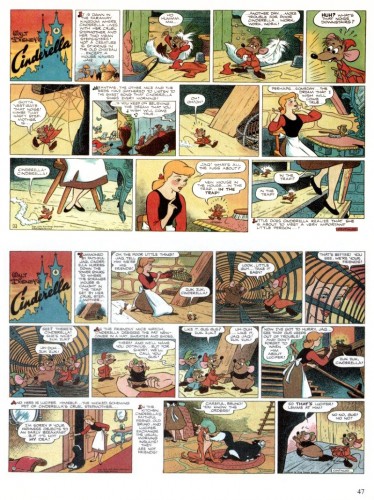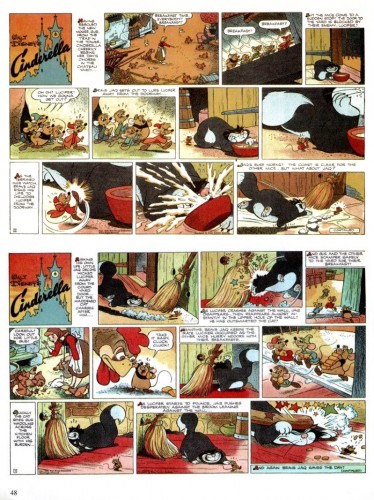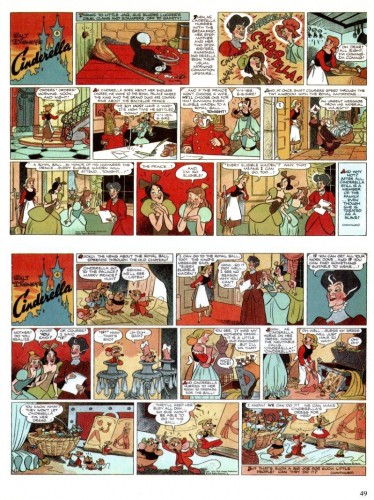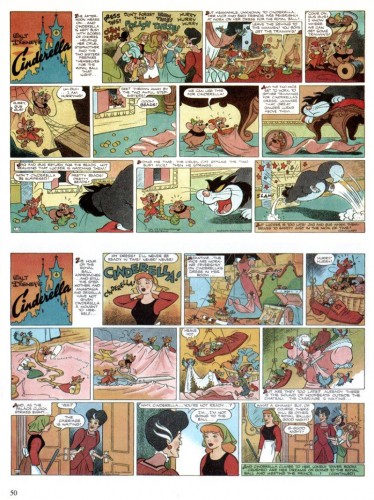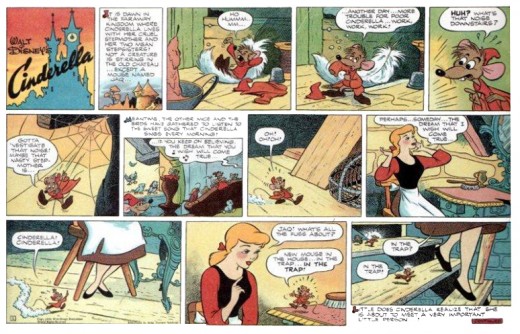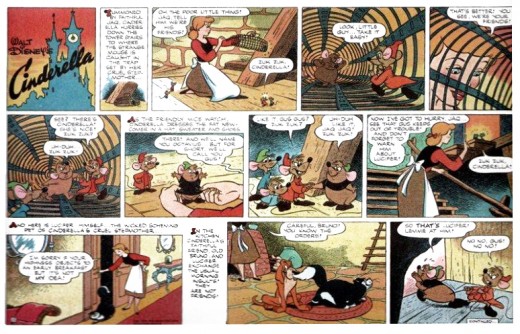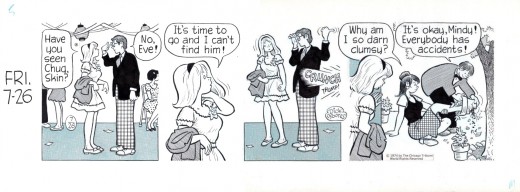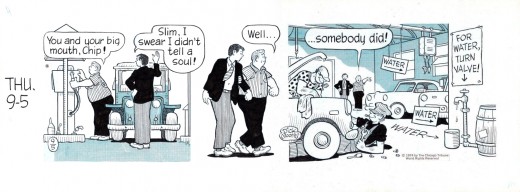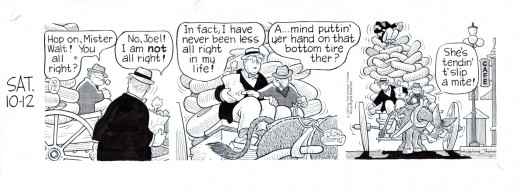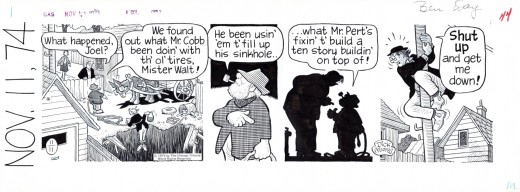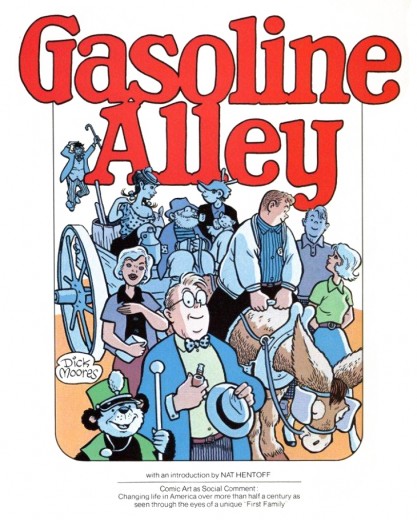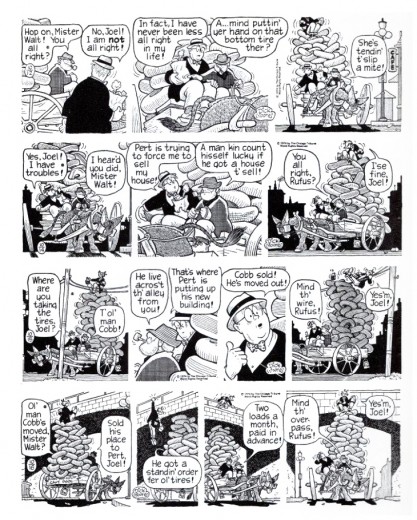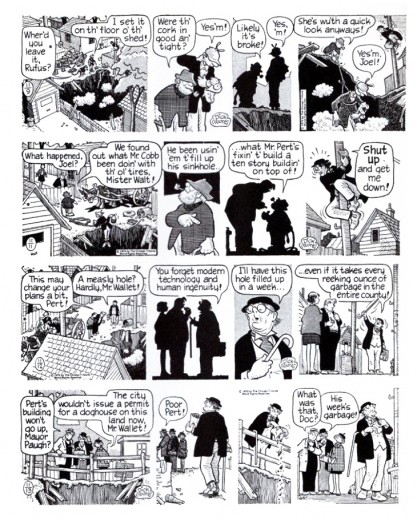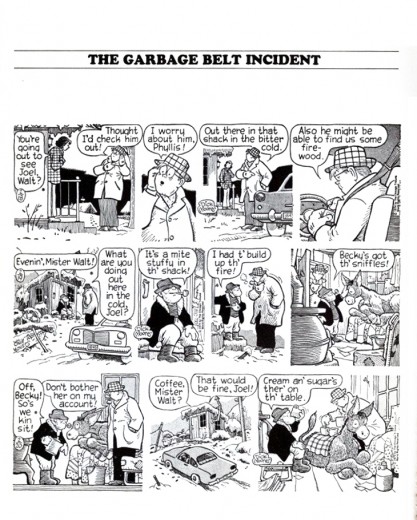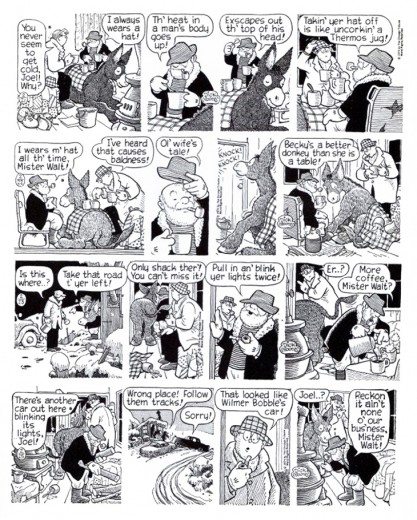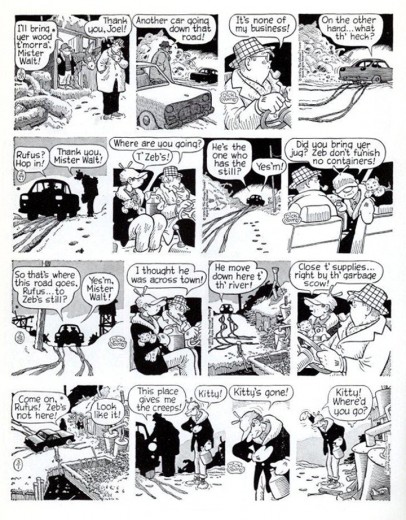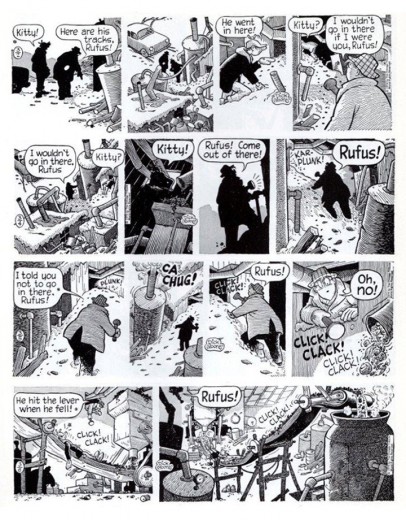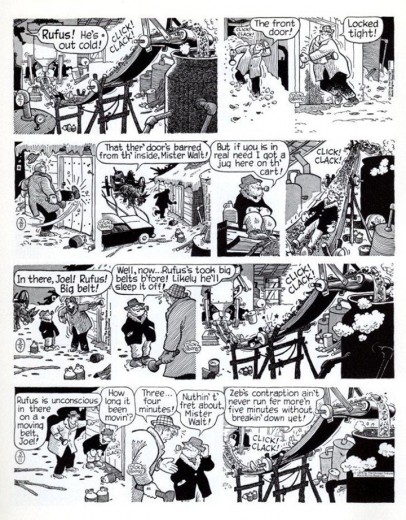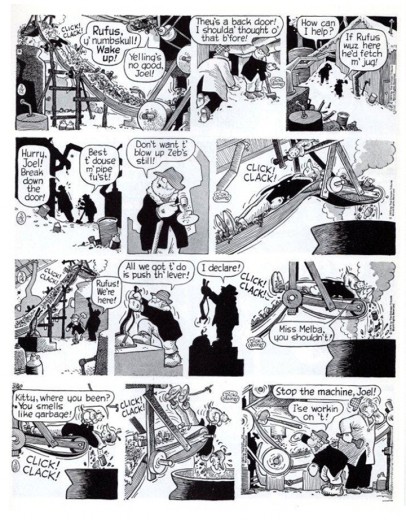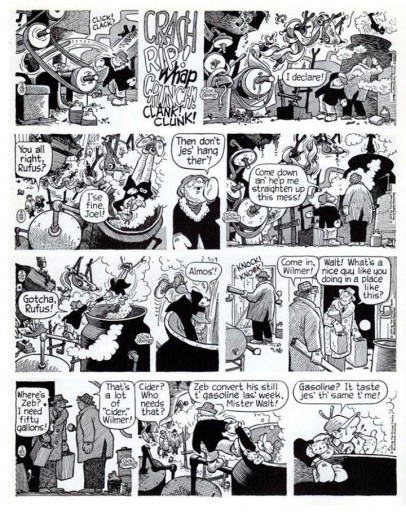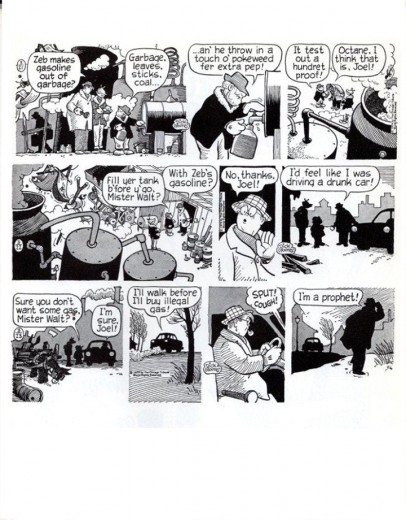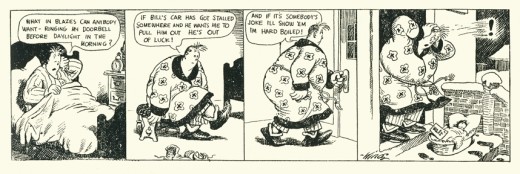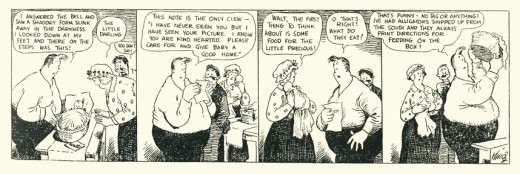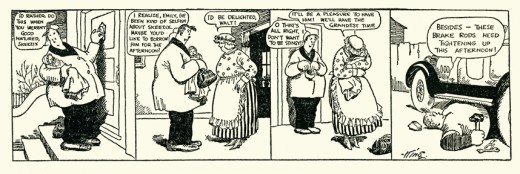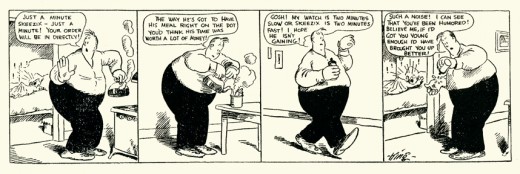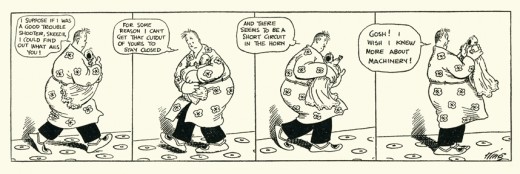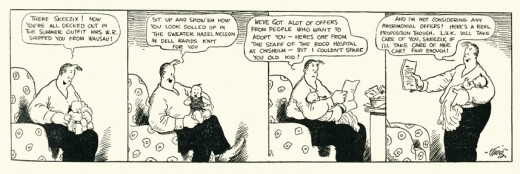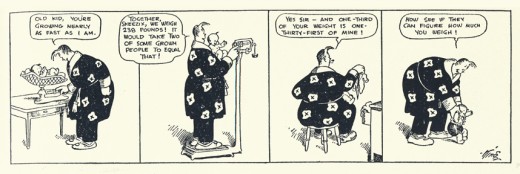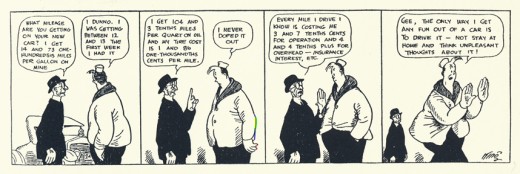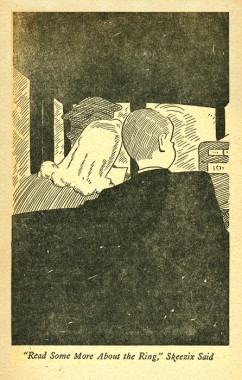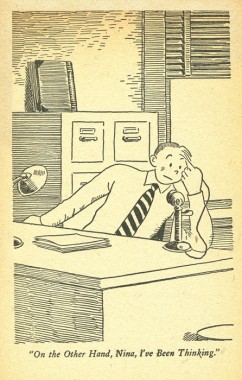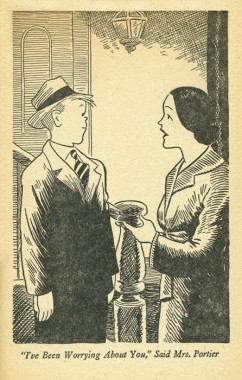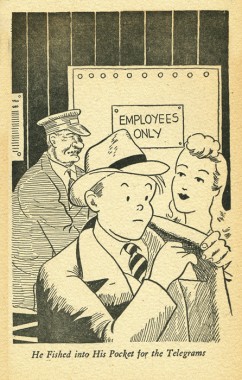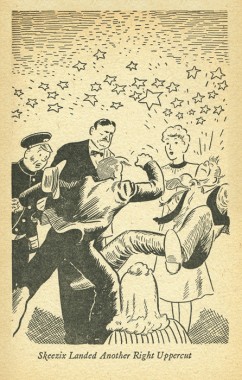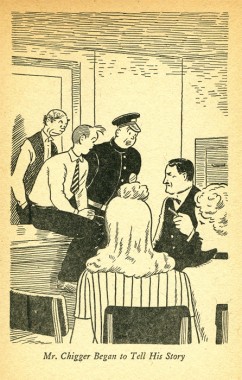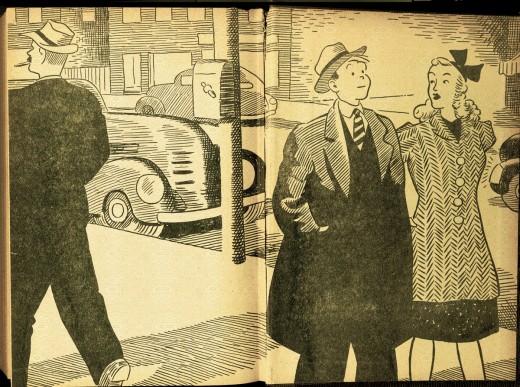Search ResultsFor "moores"
Bill Peckmann &Books &Comic Art &Disney 14 Oct 2010 07:14 am
Cinderella strip
- Bill Peckmann sent me the following strips from a rare book he has of Animated Features and Silly Symphony Comics. The copyright date is 1950. CinderellaSunday strips feature artwork by Manuel Gonzales, penciler and Dick Moores, inker. Moores, of course, took over the Gasoline Alley strip from Frank King. (These Gasoline Alley strips are so beautiful, I’ve posted some of them. I have a book somewhere, if I can find it I will put up more of them.)
Thanks to Bill Peckmann, for the Cinderella strips. Here are the first half of these strips. More will follow soon to conclude the story.
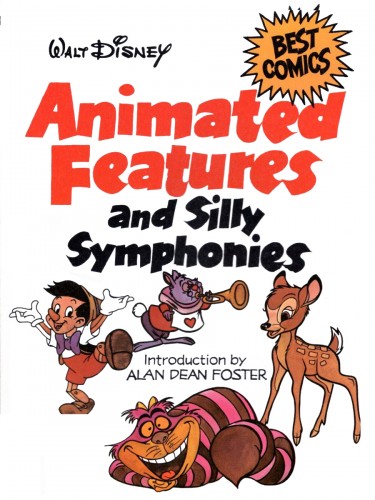
(Click any image to enlarge.)
Comic Art &Disney &Illustration 05 Jul 2010 08:08 am
Dick Moores – 2
Here are more Dick Moores comic strips. These are, again, from the collection of Bll Peckcmann. Bill sent notes along with them; the comments with the strips are by him. Many great pieces.
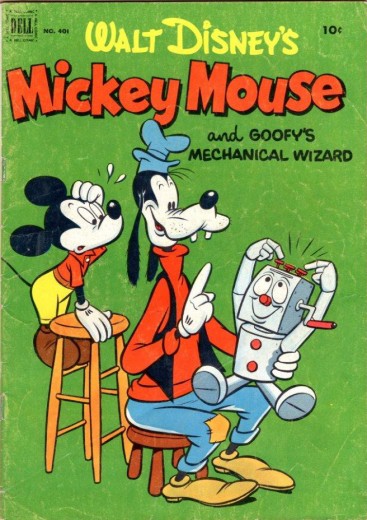
(Click any image to enlarge.)
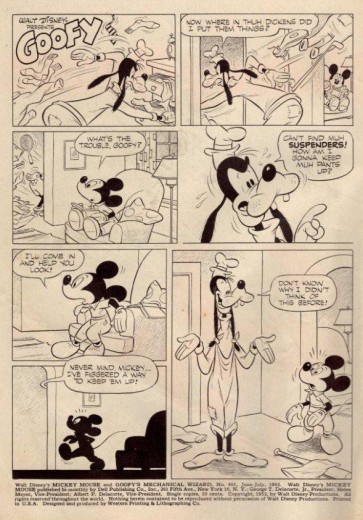
Inside front cover gag. Lower left panel is all
Dick Moores, neat silhouette, wrap around tail on word balloon.
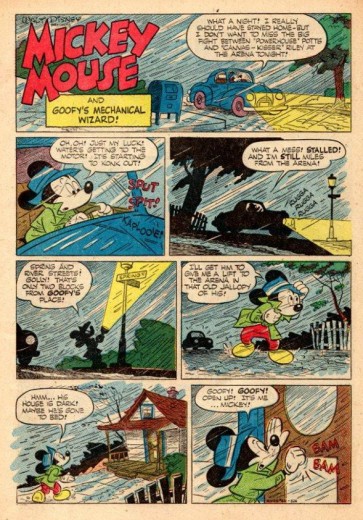 1
1
Title page. Everything we loved about Gasoline Alley is already here.
Great spotting of blacks, wonderful feel for the weather and
he always moves the story along with well designed panels.
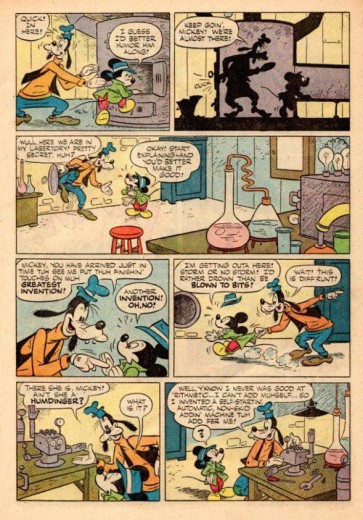 2
2
Page 3 of story. Here we can see his love for entering hidden rooms,
basements, barns etc. Another nice touch, the diagrammatic silhouette.
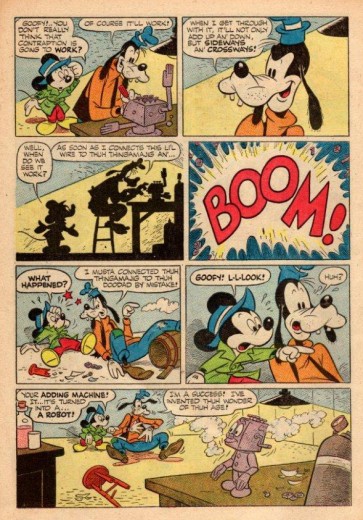 3
3
Page 4. Nice intro of the little robot character.
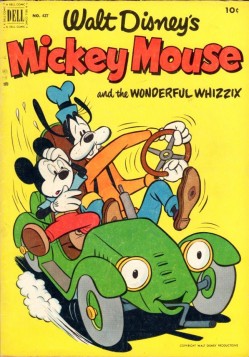
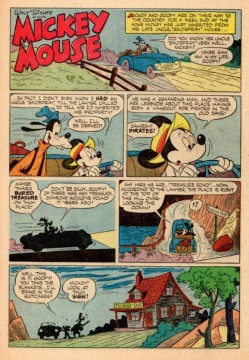 1
1
First 3 pages of 2nd story in the book.
Dick Moores’ ease of story telling comes through, a portent of
things to come 20 years later with Gasoline Alley.
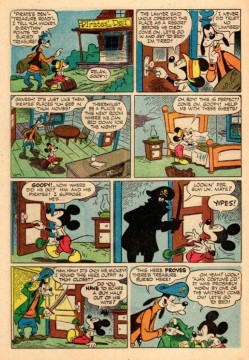 2
2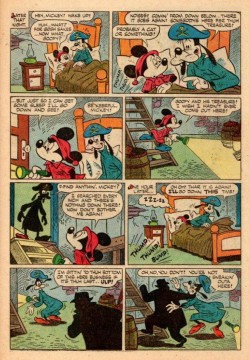 3
3
I wonder if he wrote his own stories like Barks?
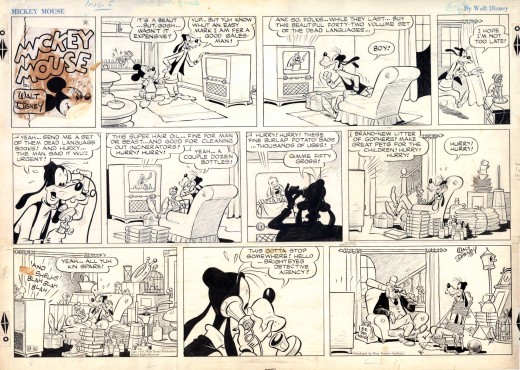
Here’s a MM original that I think (could easily be wrong) was done by DM.
The time/year fits with the time he was doing Disney stuff, there’s also a nice silhouette in it
and that loose chicken scratching, cross hatching that I love. Whoever did it, it’s beautiful,
what neat brush and pen lines, not one dab of correction whiteout used on it.
Bill Peckmann &Comic Art &Illustration 03 Jul 2010 08:17 am
Dick Moores – 1
- Probably my favorite comic strip artist, when I was a kid, was Dick Moores. He was the guy who’d taken over Gasoline Alley from Frank King in 1959. I didn’t know much about the man, but I cut out and saved almost every strip he did. I thought the guy drew comics like an artist – not a cartoonist.
Bill Peckmann recently wrote to me about his collection of Moores’ work – which included four original strips of Gasoline Alley as well as scans of some of his Disney comic work. I was a bit surprised to find out that he’d done so many Disney strips – including ones I enjoyed when I was younger, such as “Scamp”.
Bill Peckmann, in writing me, had a lot to say about Moores’ artwork: “Moores’ panel compositions are some of the best ever done in comic strips, they’re so good that when you make a page of dailies, that also turns into a beautiful design. I don’t think anyone can spot blacks better than the way DM did them. He probably got that from assisting Chester Gould.”
Here’s a first post of some of Dick Moores’ Gasoline Alley strips. We’ll follow soon with some of the Disney strips.
Here are some scans of random strips from the following book:
Daily post 17 Mar 2009 08:19 am
St. Pat, the Book of Kells & Ghibli
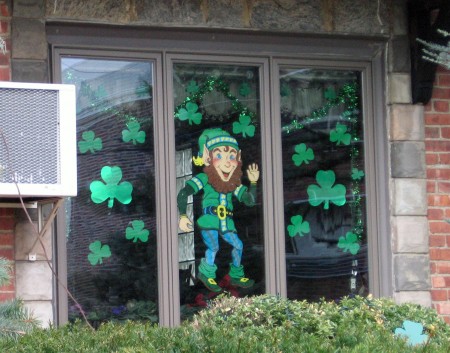
(Click any image to enlarge.)
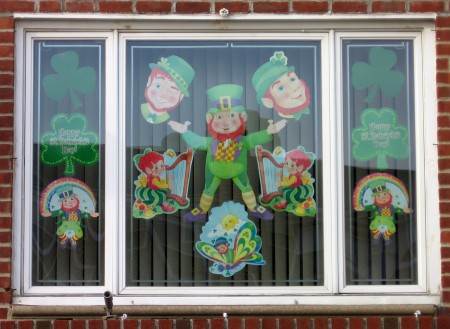
There are those who are Irish, and those who
decorate their windows as if they were Irish.
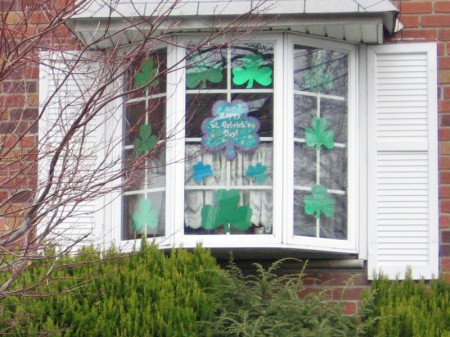
A day to spend in the New York Tavern.
Thanks for the photos from Queens by Steve Fisher.
_________________
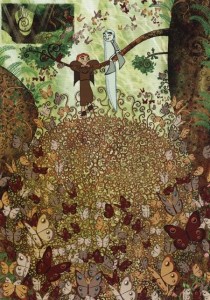 -Brendan and the Secret of the Kells seems to be the animated feature to watch in 2009. Over the weekend the film was the big winner at the Berlinale at this year’s Cartoon Movie in Lyon, winning best European director and best producer.
-Brendan and the Secret of the Kells seems to be the animated feature to watch in 2009. Over the weekend the film was the big winner at the Berlinale at this year’s Cartoon Movie in Lyon, winning best European director and best producer.
More than six hundred participants voted for the Cartoon Movie Tributes which recognise companies or personalities exercising a positive and dynamic influence on the European animation feature film industry. Irish animator Tomm Moore was named best European director of the year for his feature debut which had had its world premiere in the Berlinale’s Generation sidebar last month.
This film was directed in Ireland by Tomm Moore at his studio (partnered with Paul Young) the Cartoon Salon. His codirector was Nora Twommey. The film was produced in cooperation with the French company, Les Armateurs, the company that produced the wonderful The Triplettes of Belleville. The €6 million budget was raised from a number of European countries.
You can see a one-minute trailer on line here.
You can see three good clips here.
(Thanks to Koen De Koninck for the lead.)
Here are some reviews:
Variety
______Space is distorted so that everything looks deliberately flattened, yet there’s a very high level of craft deployed throughout to build up patterns within patterns. This may be the perfect film for children whose parents are art historians specializing in pre-Renaissance periods.
______That ‘s not to say others won’t enjoy it, but finding an aud is going to be a challenge for marketing departments. Despite the many participants from across Europe listed in the credits, the pic’s most fruitful territory is likely to be Ireland, and even there, competition with Hollywood fare will still be tough.
The Irish Times
______The story does have a neat arc and the voice-work is first rate, but the thinly drawn characters are sometimes upstaged by the bold images and by the fine, insistent music from KÃla and Bruno Coulais. Moreover, the desire to pack in so much research seems to have occasionally overpowered the need to create a clean narrative line.
______These are quibbles. The Secret of Kells remains a surprising piece of work that should appeal to smart children and open-minded adults. Chemically befuddled students may enjoy it even more.
Screen Daily News
______Director Tomm Moore and his team really excel themselves in these forest sequences, where Irish monasticism meets Busby Berkeley. At times, motifs from megalithic passage graves and Celtic jewellery float in the background like micro-organisms under a microscope, or fall in the form of snowflakes. Perspective is flattened out, and Brendan and Aisling are framed inside branches, just as Biblical characters were framed inside the opening letters of illuminated manuscript pages.
- Now on to Japan
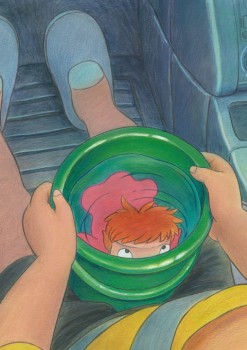 - Studio Ghibli has teamed with Toyota to start a new animation training system for young people. Beginning April, 20 new employees will be sent to Aichi Prefecture in western Japan for a two-year course to learn animation techniques while being exposed to robotics and other Toyota technologies. Miyazaki and other veteran Ghibli animators will give lectures to the group.
- Studio Ghibli has teamed with Toyota to start a new animation training system for young people. Beginning April, 20 new employees will be sent to Aichi Prefecture in western Japan for a two-year course to learn animation techniques while being exposed to robotics and other Toyota technologies. Miyazaki and other veteran Ghibli animators will give lectures to the group.
The intent is to give students an appreciation for the traditional handcrafting skills still found at Toyota. This training, Ghibli producer and former president, Toshio Suzuki believes, will make them a better fit with the Studio Ghibli aesthetic.
It’s an unusal path, but the goal seems to be for the students to learn the hand-drawn art form in conjunction with the latest cg technology. I don’t think there’s anything comparable in the US.
Comic Art 18 Dec 2007 08:40 am
Gasoline Alley
- I recently posted a number of comic strips panels and story threads from The Gumps by Sidney Smith. This was an example of one of the great story strips that reigned in the 1920-30′s. It was certainly not the only example of these.
Gasoline Alley has always been one of my favorite strips. I fell in love with it when I was a kid just about the time that Dick Moores took over the strip from Frank King. Probably as a result of this, I have been more a fan of Moores’ work than I have been of King’s. There’s something about his open drawings that really sing to me.
Moores had been a long time assistant to King prior to taking over the strip, so he knew it well. Only recently, thanks to the work of Bill Blackbeard and Chris Ware have we been able to really appreciate this strip. It’s being published in chronological order via Drawn & Quarterly Books.
Walt found Skeezix, a baby, on his doorstep on Feb. 14th, 1921. For an unmarried garage mechanic to raise a child in the 20′s there were obvious problems to face. The strip faces these problems as we watch Skeezix grow up over the years and Walt grow older. Life goes on in this strip, and it’s wonderful.
Here are a few strips from the 1921 and 1922.
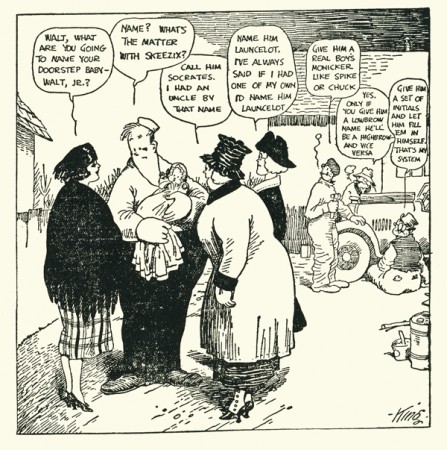
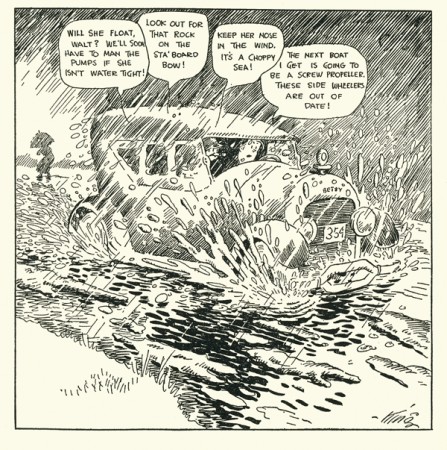
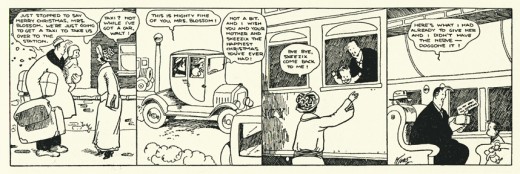
Within the first year you can already see the attachment between Walt and Skeezix, and you can see that Skeezix is growing up in front of your eyes. It’s just great.
A while back I posted a piece about the illustrated novel by Frank King “Nina and Skeezix.” It was published in 1941, 20 years after Skeezix was born. You can read that post here.
Comic Art 17 Nov 2006 08:00 am
Gasoline Alley
- In the last week, Jerry Beck on Cartoon Brew posted a note about the recent editions of the comic strip, Gasoline Alley.
This has long been one of my favorite comic strips. 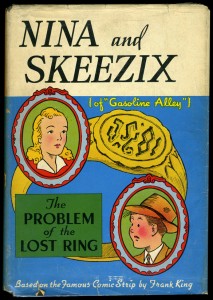 When Dick Moores (original assistant to Chester Gould on Dick Tracy) took over the strip, I thought the artwork, specifically the compositon, kept getting better and better. Very clean and open and sharp.
When Dick Moores (original assistant to Chester Gould on Dick Tracy) took over the strip, I thought the artwork, specifically the compositon, kept getting better and better. Very clean and open and sharp.
I remember seeing a book on filmmaking where I first learned how NOT to cross the 180. This cross cutting information was illustrated with a 4 panel strip from Gasoline Alley. How perfect! The strip was always quite cinematic; excellently illustrating good film technique from panel to panel.
Gasoline Alley really started when playboy, Walt Skeezix found a baby on his doorstep Feb. 14, 1921. The boy was named Skeezix, and over the years Skeezix Wallet grew naturally, and an audience grew with him. It was played out like the first soap opera – and it probably was.
The strip was understandably enormously popular.
(Click any image to enlarge.)
In 1941, Whitman publishing followed several other books for “girls and boys” with a novel about Skeezix Wallet and Nina Clock which was written by Frank King. I haven’t yet read the book (even though I’ve had it for a while), but I love owning it.
The pages are printed on newsprint – designed for deterioration, I think. The illustrations by King were done specifically for his book.
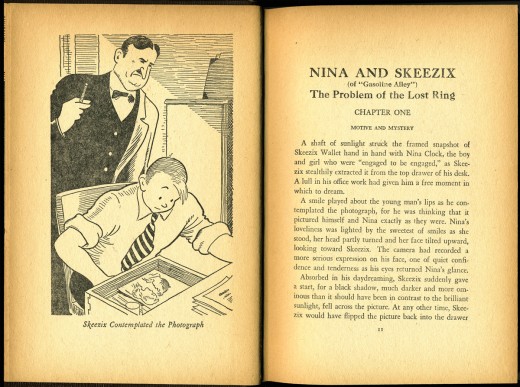
The book’s first double page spread
